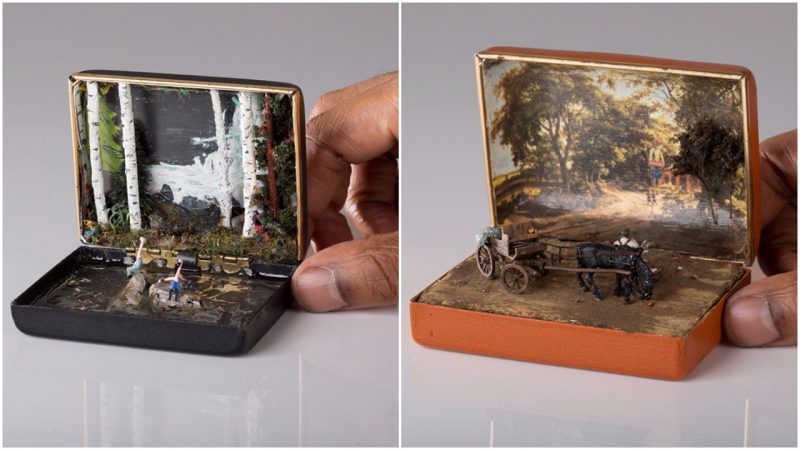It was 1821 when French artist and photographer Louis Daguerre joined forces with painter Charles-Marie Bouton to develop the Diorama theater, a 10-to-15-minute-long visual display of cleverly manipulated light on a hand-painted multi-layered scene that produced a dramatically changing picture.
The pair put a lot of time and effort into the process, and their persistence would eventually pay off as the Parisian show became exceptionally popular–and brought them a considerable sum of money.
Although Daguerre’s Paris Diorama sadly burned to ashes in 1839, the concept of the Diorama didn’t stop with this tragic event. It soon spread around the world. Other artists continued developing Daguerre’s techniques in the upcoming decades, employing the process mostly in natural history museums where the art of the diorama was adopted as a method of display and where some of the finest examples of this art form can be seen.
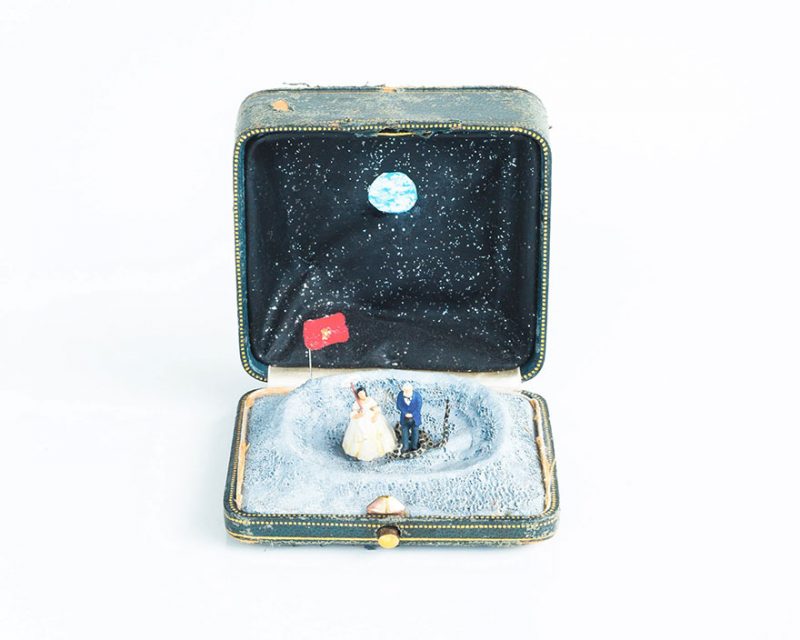
The Daguerre and Bouton Diorama illusions differ somewhat from the modern dioramas that we are familiar with today, the often intricate miniature static scenes of everyday life, historical figures, events, people, and landscapes. Creating miniature dioramas means building a whole new world and letting the viewers become part of another epoch. At least that’s what Canadian-Trinidadian artist Curtis “Talwst” Santiago has to say about his captivating series of miniature historic dioramas inside of vintage ring boxes.
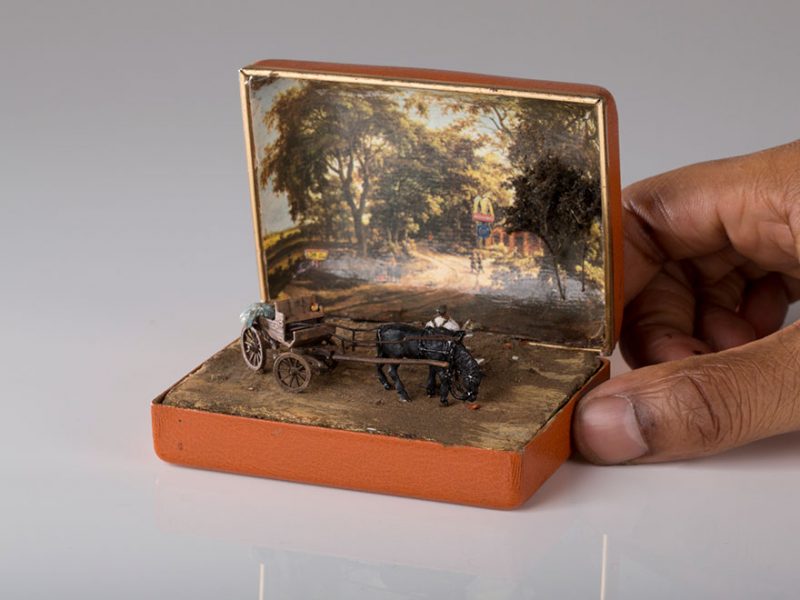
The Toronto-based artist indeed created a whole new world by turning the tiny interior of these vintage ring boxes into detailed scenes from different historical periods.
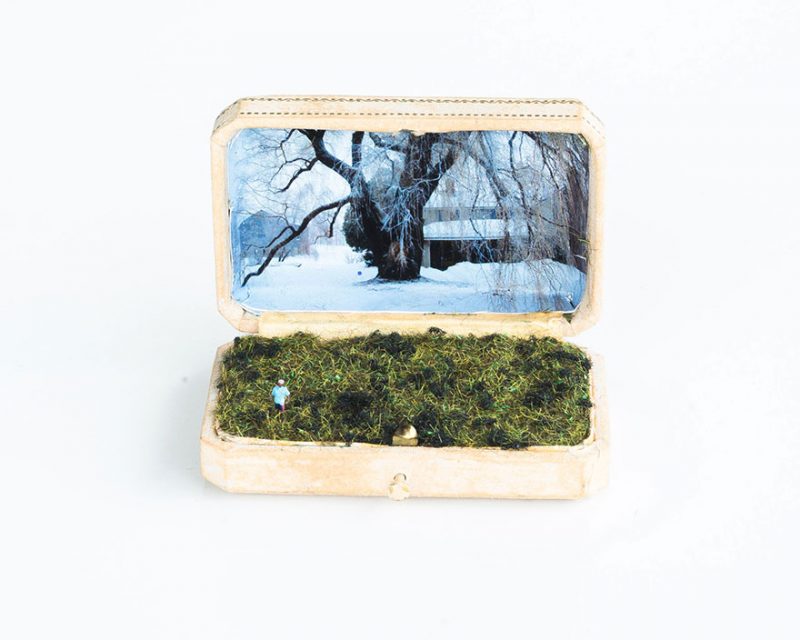
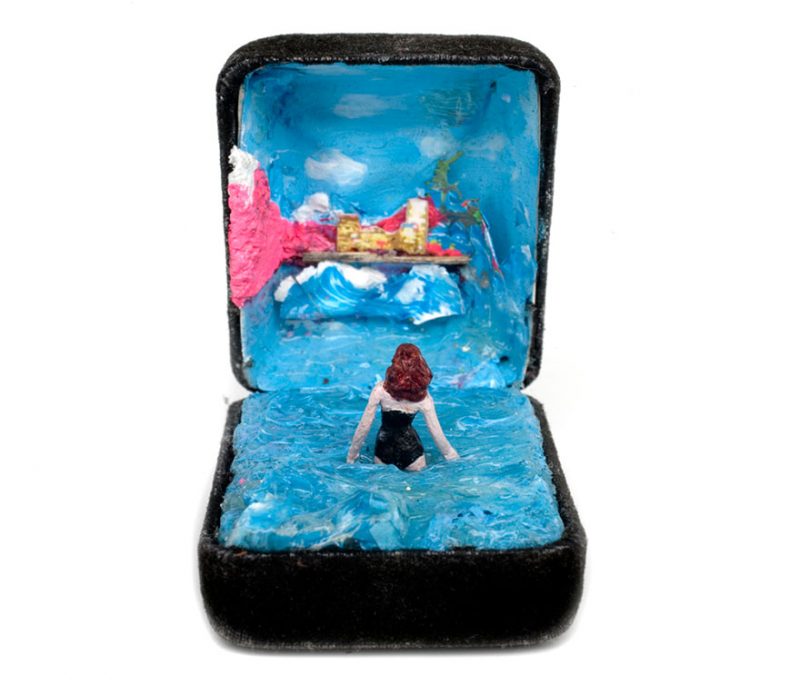
It all began when the street vendor gave him an old ring box and told him, “I want to see what you make with this.” The artist turned the ring box into a Venus-type scene of a woman dressed in a black swimsuit emerging from the sea. From that day on, creating tiny scenes inside of vintage ring boxes has become Talwst’s hobby and passion.
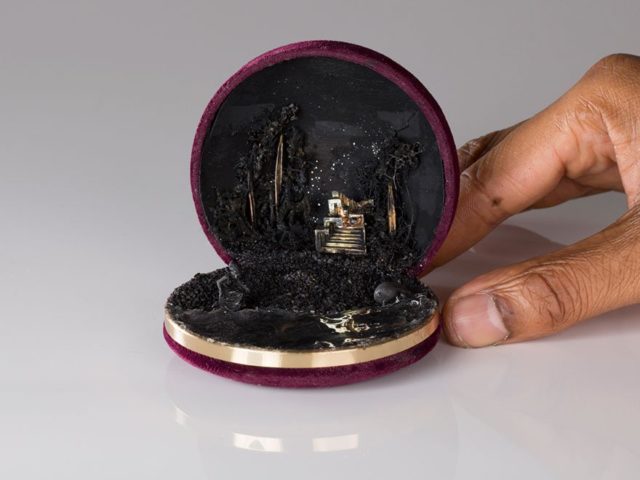
“The work’s small-scale allows me the opportunity for a very particular kind of meditation,” he says. “The overarching theme is related to time and space; to my sense of the vastness and the fragility of the world which I inhabit; and my fleeting memories of this world.”
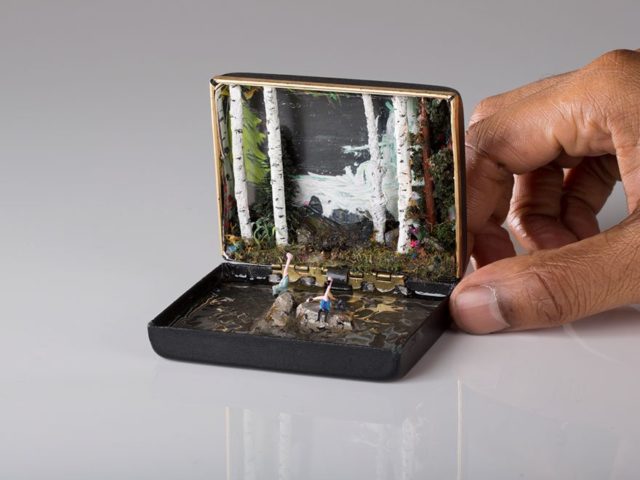
His works of art are often inspired by present-day people and events, but many of the unique, detailed stories he creates draw inspiration from historical events and pop culture. As reported by The Guardian, he says that he likes capturing memories and fleeting moments. “They feel all the more moving because of their fugitive nature,” Talwst says.
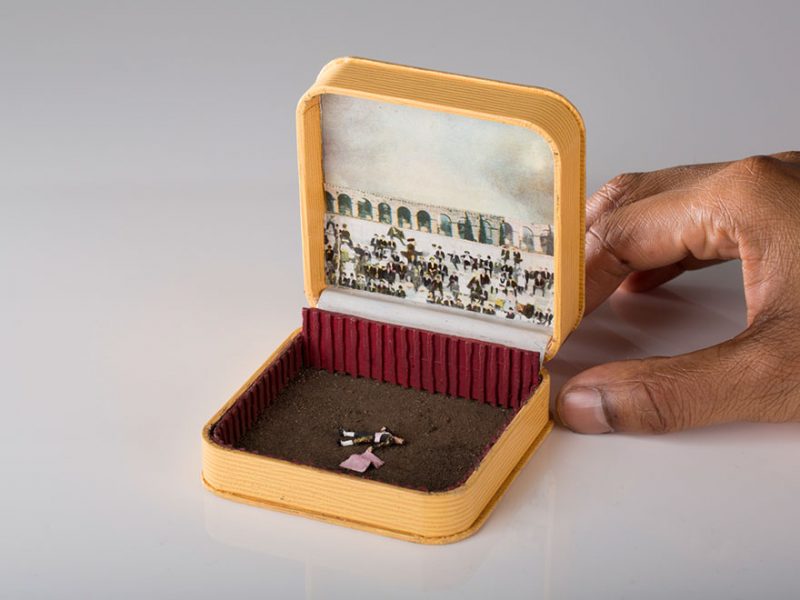
To see more of his awesome ring boxes, check out his official website, Facebook, Instagram, or Twitter account.
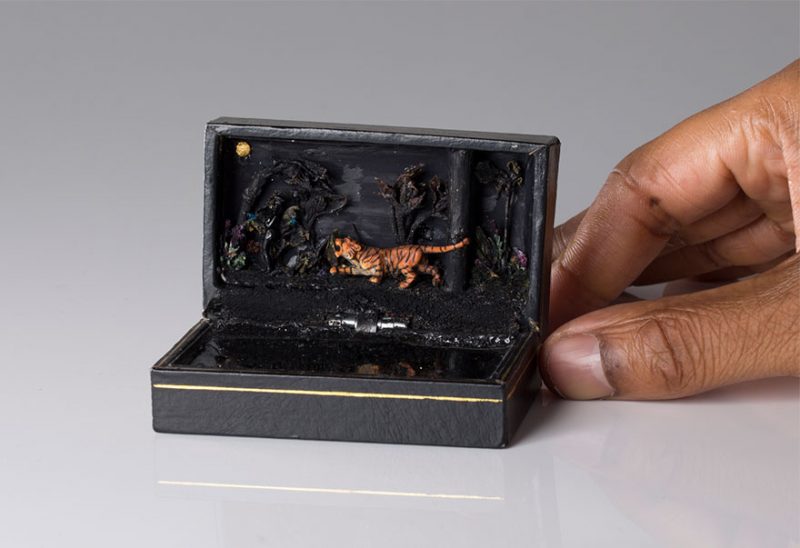
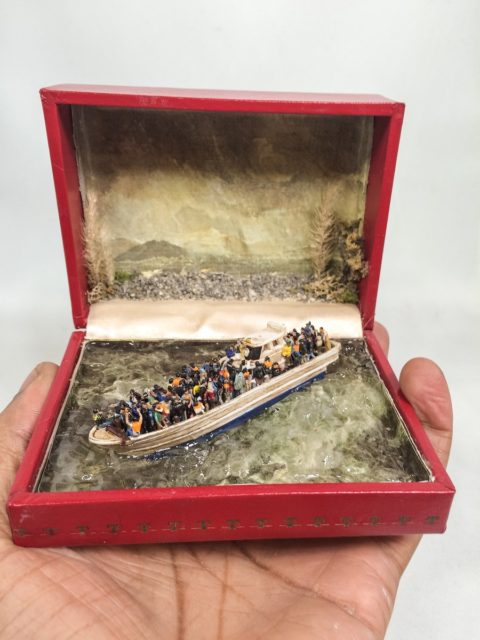
He is a frequent visitor to various antique markets, where he hunts for vintage ring boxes. He also buys them on eBay and on several occasions some of his fans have surprised him by sending him the much-needed ring boxes.
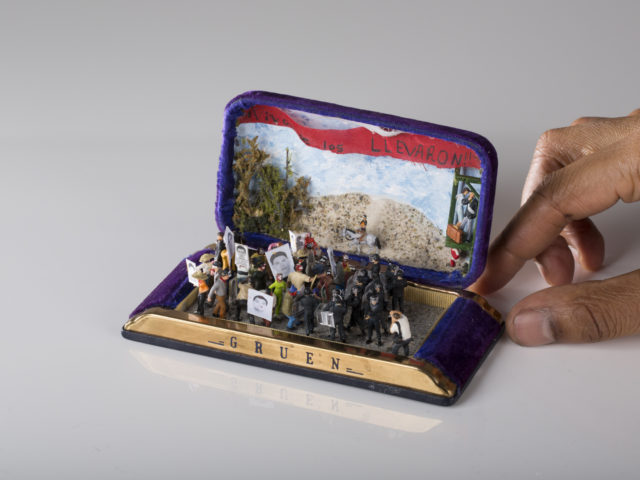
Talwst’s dioramas are just one of the many possible variations on this centuries-old art form that has continued developing through to the 21st century. Talwst’s spectacularly detailed scenes offer a glimpse into our everyday lives, our controversial past and uncertain future.
Read another story from us: Surviving examples of vintage household products manufactured during WWI
What is most important, these intricate pieces of art might serve as an inspiration for many others to experiment with miniature dioramas.
